Site of the crash
It is a bright, chilly winter morning, and I am walking on the beach between the dunes that lie beyond Tramore’s promenade and the town’s wide, shallow bay.
Sea dunes move and shift over time, sculpted both by wind and erosion. These beautiful dunes at Tramore beach, loosely knitted together by spiky grasses, are different now from what they looked like in the early hours of Friday, July 2nd, 1999.
On that exceptionally foggy night, an Air Corps helicopter known as Rescue 111 came flying in over the beach, made unexpected impact with the edge of an unseen dune, and tumbled catastrophically out of the air. The four men aboard, who had been engaged on a search-and-rescue mission at sea, all died instantly on impact.
I am walking out to the dunes with Eddie Mulligan, who was in the Irish Navy in 1999, and was a close friend of Mick Baker, the co-pilot of Rescue 111. They had trained together in the Curragh; Mulligan was a pall-bearer at Baker’s funeral.
As we walk, he holds a small rolled-up flag tight in one hand. “I always visit the crash site once a year,” he says. “I bring a Tricolour with me to plant there, because the four of them were in the Defence Forces and they died in service for the Irish people.”
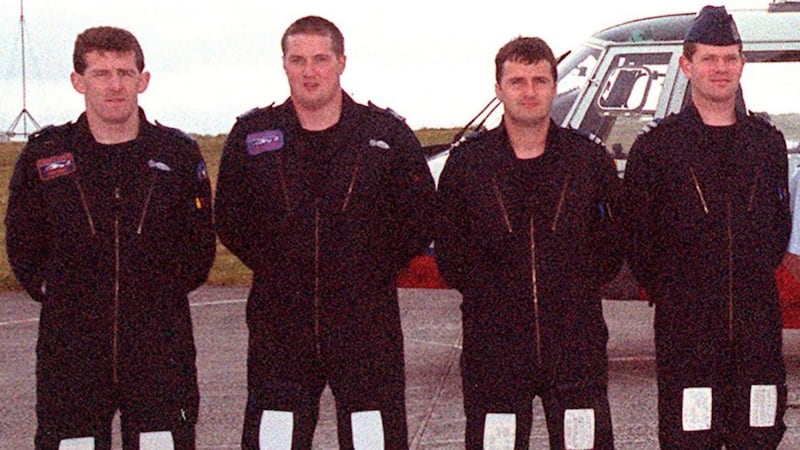
Without Mulligan’s local knowledge, I would not have found the site by myself. The memorial, now deep and secluded in a hollow of high dunes, is not visible from the beach, and involves some steep scrambling to access.
There is a simple wooden cross at the site, a metal plate attached with this engraving on it: “Erected in memory of the crew of Rescue 111 who died on this spot returning from a rescue mission 2 July 1999. Capt Dave O’Flaherty. Capt Mick Baker. Sgt Pat Mooney. Cpl Niall Byrne.”
O’Flaherty was 30; Baker 28; Mooney 34; Byrne 25.
This is the story of Rescue 111.
Inaugural flight
Thursday, July 1st, 1999, was a landmark day for the Irish Search and Rescue services. It was the inaugural day of 24-hour service in the southeast coast region, based at Waterford Airport and provided by the Air Corps. Prior to this, the Air Corps cover in the southwest region had operated only in daylight hours; a service that had begun the previous year.
Their new Dauphin DH248 helicopter, known as Rescue 111, left Baldonnel at 10.24am that day and arrived at Waterford Airport at 11.02am. There was a crew of seven: Dave O’Flaherty, the pilot; Mick Baker, co-pilot; Pat Mooney, winch operator; Niall Byrne, winchman; and a three-man technical crew.
For the crew, there was the buzz of being the first people to participate in the first day of a new service. RTÉ cameras were on site in Waterford to film footage for broadcast on the news that evening.
The helicopter took off at 12.41pm for a 35-minute publicity flight for RTÉ. After that, Rescue 111 carried out various training exercises during the afternoon, including one out over the sea, and a reconnaissance of the landing facilities at Waterford Regional Hospital.
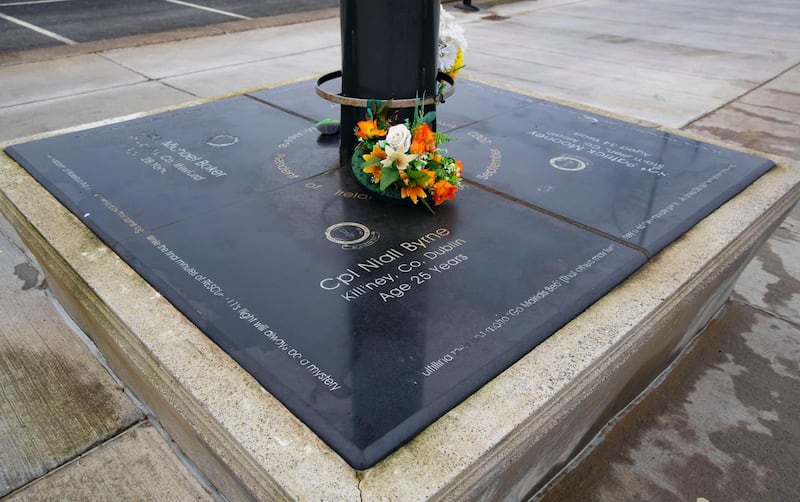
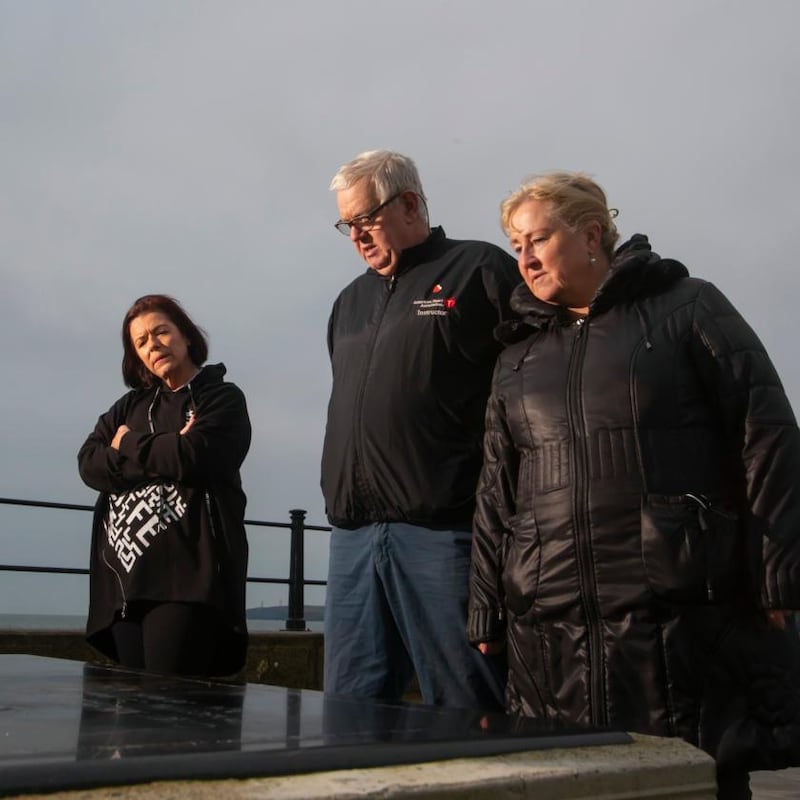
When all this had been done, the aircraft was washed down, refuelled, and towed into the hanger at Waterford Airport. At that time, the airport closed at 5pm Monday to Friday, as did its control tower. The airport manager later informed the investigation into the crash that the pilot of Rescue 111 was made aware that day that there would be no air traffic control, and no aerodrome flight information services officer personnel on call after those hours, or at the weekend, for night search-and-rescue operations. The out of hours service was to be provided by the air corps.
The pilot informed one of the three-man technician crew that day that the control tower and the airport lighting, including the runway, would be his responsibility for night operations. This technician had carried out similar duties previously at Carrickfinn Airport in Co Donegal.
The planned on-site crew accommodation at the airport had not yet been built, so the seven men were staying in three rented holiday houses at Dunmore East. The crew departed at 5.15pm, and made a grocery stop along the way to buy provisions for dinner.
Emergency call
At 8pm, a locally owned boat named the Realt Or left Dungarvan harbour for a fishing trip. The Realt Or was a 4.5-metre yellow fibreglass boat. There were four men and a young boy aboard. The boat had only two life-jackets for five people and no anchor. It did have a VHF marine radio, but no one on board knew how to use it.
While they were out at sea, the weather worsened and the crew became disoriented and lost in thick fog that had descended on the area since they had put to sea.
Unable to find their way back to harbour, the crew placed a call via mobile phone to the service we now known as the Irish Coast Guard (in 1999 it was known as the Irish Marine Emergency Services), asking for help.
At 10.02pm, the Dublin-based co-ordination and communications centre of the Coast Guard phoned the search-and-rescue team in Waterford. They were at their temporary accommodation in Dunmore East. Dave O’Flaherty, as captain, took the call.
In the report into the crash subsequently carried out by the Air Accident Investigation Unit, there are transcripts of several calls between Rescue 111 and the Coast Guard, between Rescue 111 and Waterford Airport Tower, and between Rescue 111 and the Helvick Lifeboat.
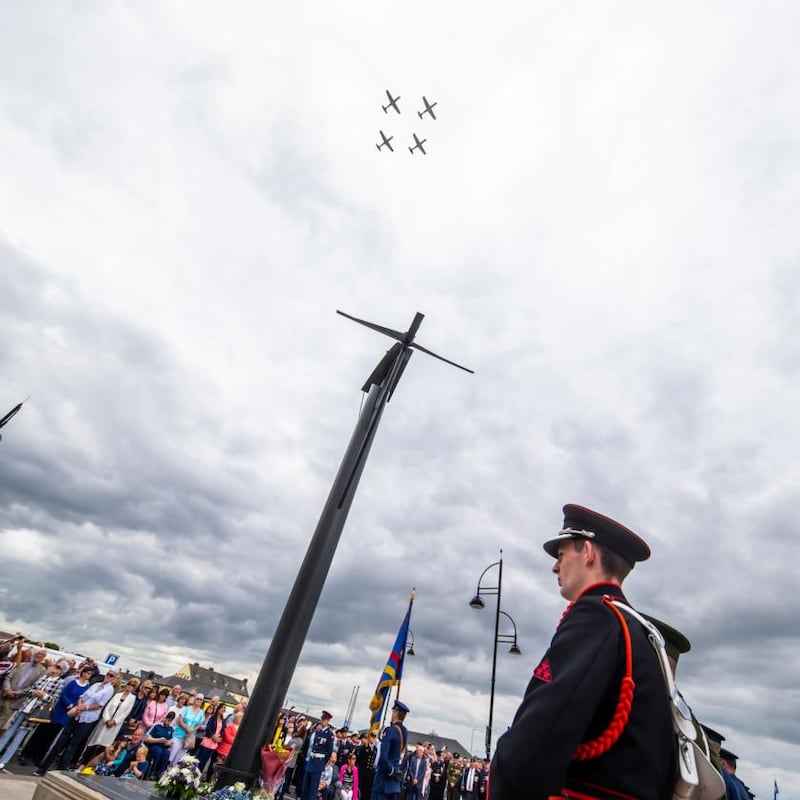
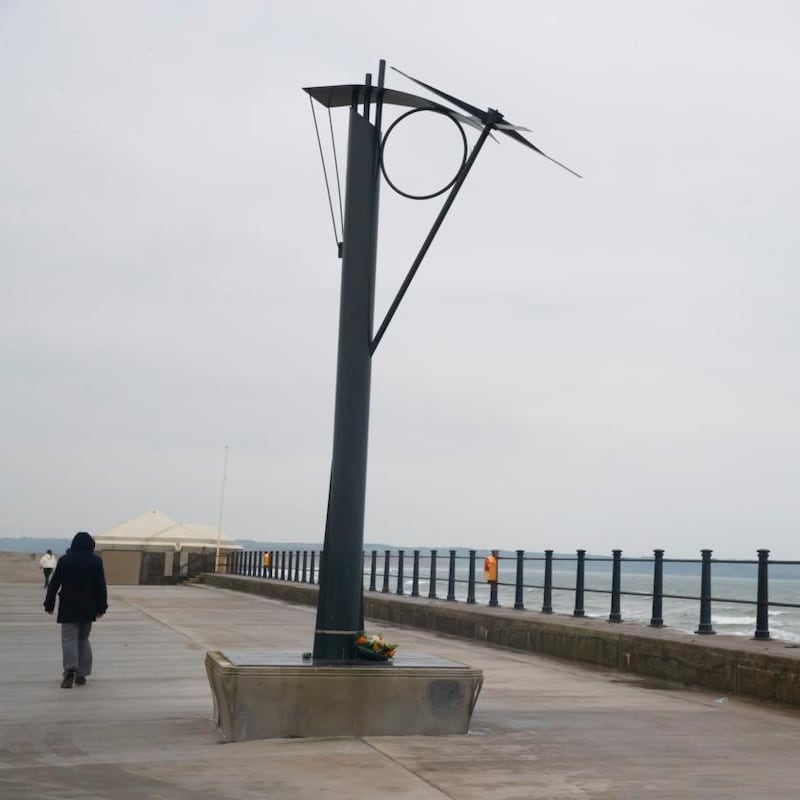
The helicopter was not equipped with either a flight data recorder or a cockpit voice recorder. It was not required to carry either under Air Corps orders at that time, so no records exist of conversations between the crew once they were airborne.
“Dublin here. We have a job for your shiny new Dauphin,” the Coast Guard said.
O’Flaherty replied: “Very good. I had a feeling you’d call us out on our first night.”
“That’s the size of it, yeah. The information we have is this fellow is on a mobile phone, he doesn’t have VHF at all. Down off Dungarvan area and he’s lost … apparently there’s very, very bad visibility. We’re calling out the Helvick Inshore Lifeboat,” the Coast Guard said.
It is a 15- to 20-minute journey by road from Dunmore East to the base at Waterford Airport. While the crew of Rescue 111 were on their way there in a minibus, the Coast Guard successfully instructed the Realt Or’s skipper by mobile phone on how to tune his VHF radio. Then O’Flaherty received a second call from the Coastguard, at 10.09pm.
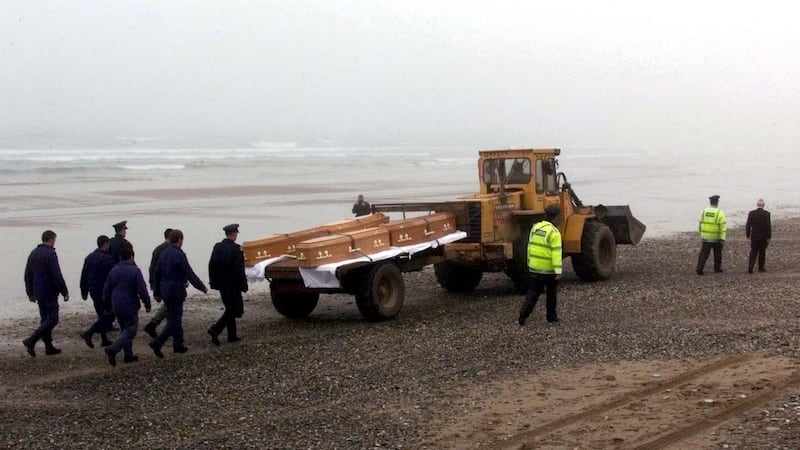
“You can stand down. We have established comms [communications] with this guy. We’ve talked him into putting on the radio, he can read us and we can read him now, so you can stand down. We don’t require you.”
In the seconds that followed, the transcript of this conversation records an internal discussion at the Dublin base as to how to instruct the helicopter crew.
Person 1: “Will I stand him down?”
Person 2: “The helicopter? Well, if they want to go for a bit of practice, things like that, we don’t mind.”
Person 1: “Are we tasking him or are we not?”
Person 2: “Are they at the airport?”
When asked where they were, O’Flaherty told the Coast Guard they were “on the road out to the airport”.
The Coast Guard replied: “You might as well go then if you’re en route.”
And so, the helicopter crew continued their drive to the airport.
No reply
The RNLI base at Helvick Head is picturesque, with its sheltered harbour and sweeping view out over the bay. The Alice and Charles was the name of the inshore lifeboat they had back in 1999; a 7.5-metre boat that required a three-person crew. It did not have radar.
John Condon was one of the 20-strong volunteer crew who responded to the pager call that evening. “I was coming back home from reffing a GAA match and the pager went off, so I continued here,” he recalls, sitting in the main room at Helvick’s base. By the time Condon arrived, three other volunteers had already showed up to crew the boat, but he stayed on to wait for them to return, as was usual practice.
The lifeboat launched and left to search for the Realt Or. “It had lost all visibility of land. When fog comes down around you, you don’t move. You wait until it lifts again. If you don’t know where you’re going and you can’t see where you are going, then you stay put.”
The fog was down at Helvick too. Condon went outside to stand by the pier with some other crew members, to try to see what was happening at sea. The international maritime VHF channel for emergency and distress calls is Channel 16, and Condon and other crew members were listening in to it on their own hand-held radios. They could hear the various conversations going on between their lifeboat, the Coast Guard in Dublin, and Rescue 111.
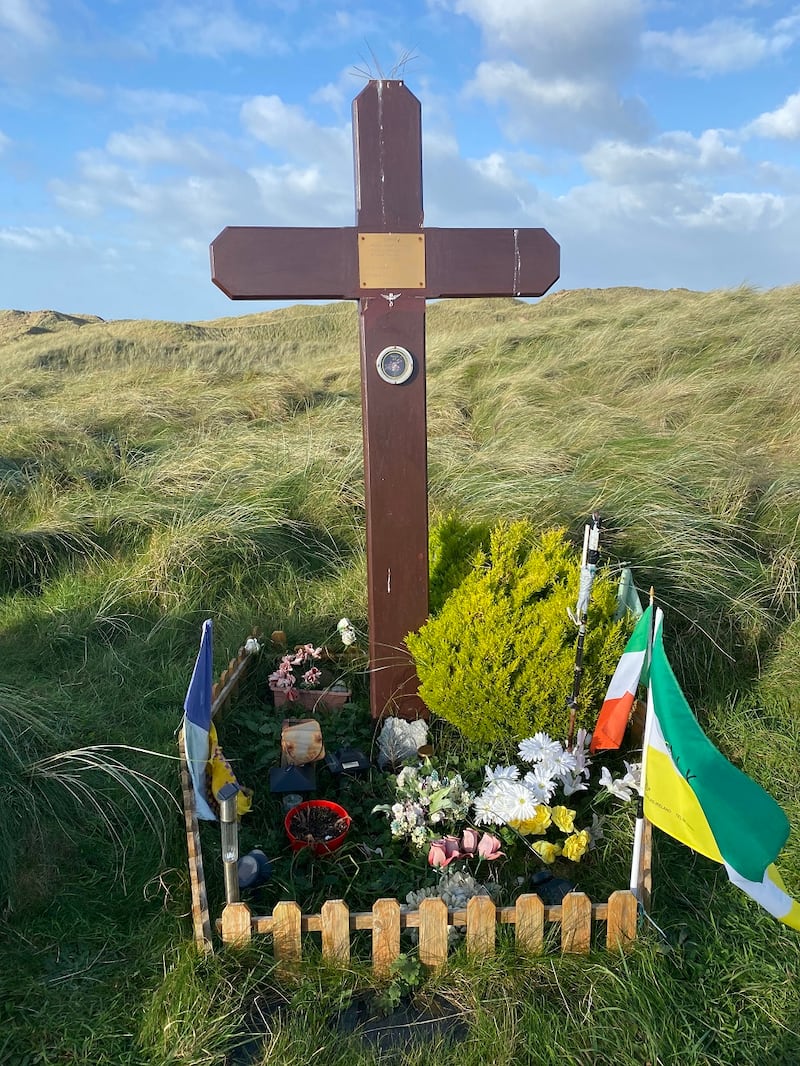
At 10.29pm, Flaherty called the Coast Guard to inform them they were at Waterford Airport and about to launch. There had already been a conversation on arrival at the airport between Flaherty, Baker and the senior Air Corps technician, as to whether the helicopter needed more fuel: it was carrying 600kg, and the maximum for the Dauphin was 800kg. It was agreed 600 kg was a satisfactory load.
By then the Helvick Lifeboat was at the general scene in the bay but unable to locate the Realt Or due to the fog and the fact the lifeboat did not have radar. The Coast Guard told Flaherty the boat’s skipper was “heading into the weather to try and keep the boat stable because he’s got a young child on there who’s very seasick.”
They also told Flaherty that they were trying to contact the Ballycotton lifeboat, a much larger boat that did have radar. Rescue 111 took off from Waterford Airport during this conversation.
At 10.58pm, the Helvick Lifeboat told the Coast Guard they had located the Realt Or. Listening in to Channel 16 by the pier back at Helvick, John Condon could hear what was going on at sea, although he could still see nothing in the dense fog. The Coast Guard passed on the position of the two boats – near Carrickapaine Rock – to Rescue 111, and asked them to continue to the location and “maybe just monitor it for a bit”. All this time, the fog was getting worse.
Rescue 111 replied: “We’re going to route to that position. We’re going to maintain 500 feet overhead the target area. We’re still in a lot of cloud, a lot of fog here.”
'We can't get in. We're doing an approach to Tramore Bay this time and if we can get down we're going to land in the Bay Area somewhere'
At 11.19pm, Rescue 111 called the Coast Guard and said: “The local lifeboat has the casualties under tow. We’re going to be lodged here for about another 15 minutes.” The helicopter remained hovering overhead to provide light. As the Realt Or was a small craft, the lifeboat had to tow it slowly to Helvick.
At 11.24pm, Helvick Lifeboat informed Rescue 111 that they could see the helicopter just above them, and again at 11.42pm.
At 11.50pm, Rescue 111 asked Waterford Airport tower if they could see the lights of nearby Tramore. “Negative, we can just about see the runway, which is a distance of 300 metres from the tower.”
Three minutes later, Rescue 111 told the Coast Guard: “We’re looking for permission to route towards Waterford Airport… The conditions there are deteriorating; we’d like to get in before they close over.”
At 11.54pm, the Coast Guard replied: “Rescue 111, you can be released and thank you for your help.”
Helvick Lifeboat, which could also hear this conversation on the VHF radio, came in after the Coast Guard and said: “Thanks for your assistance, have a safe passage home now.”
The helicopter replied: “Safe passage yourself.”
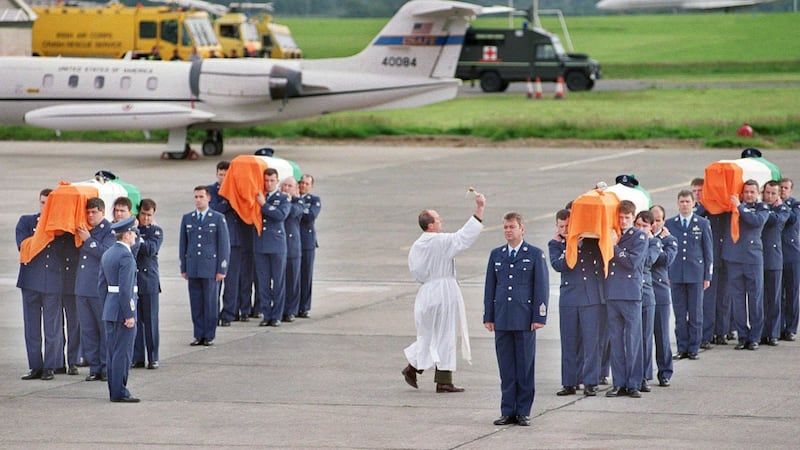
Having completed its mission, the helicopter made its first attempt to land at Waterford Airport at about 12.14 am. It overshot the runway due to poor visibility in the dense fog. The tower told the helicopter that they hadn’t seen them, despite their proximity. “Did you get the runway lights there okay?” they asked.
“Negative,” Rescue 111 replied. They began the process of making a second attempt at landing, but again overshot the runway.
“We couldn’t see you coming in again, but could hear you going away,” the Tower said, after this second attempt. They told the helicopter that if they needed to divert, the weather at Baldonnel was clear. By then the helicopter had been in the air for over two hours. It had taken off carrying three-quarters of its fuel load capacity, and now it was running short.
“Don’t have the juice,” replied Rescue 111 to the tower at 12.34 am.
At 12.35 am Rescue 111 told the Coast Guard: “We’ve had to overshoot Waterford Airport due to weather. We can’t get in. We’re doing an approach to Tramore Bay this time and if we can get down we’re going to land in the Bay Area somewhere.”
At 12.38 am, the Coast Guard called, “Rescue 111.” There was no response.
'I always remember what I said, because at the time I never cursed, and I said, F**k off, you're joking'
One minute later, at 12.39 am the Tower transcript records a “short noise on tape” from Rescue 111.
Back at Helvick Pier, John Condon and the other lifeboat crewmates listened to the repeated calls from the Coast Guard for Rescue 111 to come in; calls which remained unanswered. By then, the Helvick Lifeboat had come back safely to harbour with the Realt Or and its five rescued passengers.
“At first, when there was no reply, people were kind of looking at each other, saying it was funny the helicopter wasn’t calling them back,” Condon says. “These calls were coming from the Coast Guard every 30 seconds or so; continuous calls. The longer the calls went on and there was still no reply, a kind of realisation began to hit people here that something is after happening.
“I’ll never forget one of the launching authorities at the time, a fisherman all his life, he says to me: ‘That is the worst silence I ever heard in all my life.’”
‘Rescues aren’t supposed to crash’
In Tramore, husband and wife John and Denise Kelly were asleep. The Kellys were both then volunteers for the Order of Malta Ambulance; a three-crew operation.
The couple were woken by a phone call from gardaí. When Rescue 111 stopped responding to radio calls, both Waterford Airport Tower and the Coast Guard contacted Tramore gardaí at 12.55 am. They, in turn, called out the local Coast Guard search team, and after that, the emergency services.
“The guards called us, and their words were that the helicopter had crashed, and I always remember what I said, because at the time I never cursed, and I said, F**k off, you’re joking,” John Kelly recalls. “It was a new helicopter. The crew had only arrived that day.”
“It was the first call-out of the helicopter,” says Denise Kelly.
John Kelly phoned Áine Phelan, the third member of their crew. “I had just gone to bed. John told me the helicopter had gone down and crashed, and I said, ‘I don’t believe you.’”
“Rescues are not supposed to crash,” says John Kelly.
The ambulance was stationed beside Tramore’s Fire Station. The three of them met there, at the same time the fire brigade crew were mustering with their emergency vehicle. Noel Burns was the fire station officer. He had been woken by his pager, which reported that the helicopter had gone down in the vicinity of the dunes at Tramore beach.
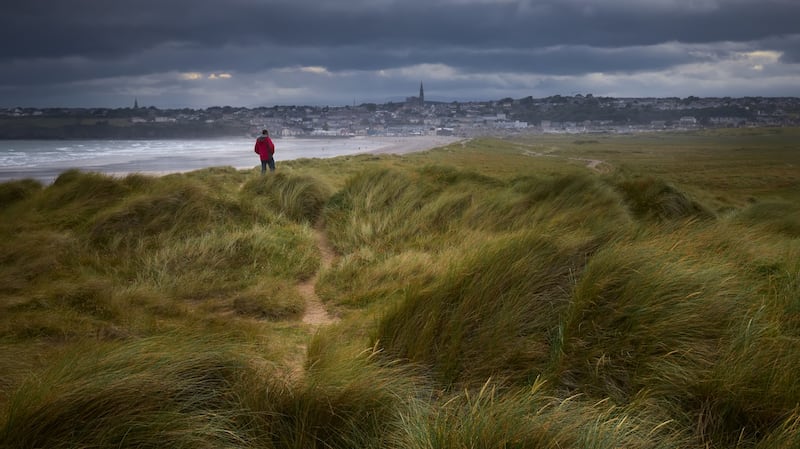
“You could not see your hand in front of your face. I had never seen anything like that fog. It was unbelievable,” recalls Burns.
Both the ambulance and fire engine drove as far as they could before reaching the beach, and then prepared to continued on foot.
“We brought as much equipment as we could,” says John Kelly.
“I tried to think about what could happen if you jumped out of a helicopter. So we brought the burns kit with us. And the kit for spinal injuries,” says Phelan.
“It was the densest fog I have ever seen. Before or since,” says Denise Kelly.
They spread out en route, wearing their high-visibility jackets, holding torches and carrying their equipment as they climbed up and down dunes in the fog, searching for the wreckage. The Coast Guard shore rescue team had started their search at 1.30am. Gradually, word began to filter back via their VHF radios that the helicopter had been located by the Coast Guard search team – and that the news was terrible.
“They had established there were no survivors,” Burns says.
'They asked us for body bags,' says Phelan. 'We carry one body bag in the ambulance, but one body bag is what we carry. We didn't have four'
“We came up over the dunes,” says Phelan. “It was starting to get dawn, about 4.30am in the morning. We were at the top of the dune and we could see down in the hollow at what looked like a big bonfire of metal and scorched grass. The brighter it got, the more everyone stood there, just looking. It was total wreckage. It was the eeriest feeling I’ve ever had.”
“It was very silent,” says Denise Kelly. “We all knew there were four dead people there. There were no words really you could speak.”
By that time the Army was on the scene, grimly securing and protecting the site where four of colleagues lay dead.
“They asked us for body bags,” says Phelan. “We carry one body bag in the ambulance, but one body bag is what we carry. We didn’t have four.”
“Generally when we arrived on a scene after an ambulance call out, there was something we could do to make a difference, or to treat the patient,” Phelan says. “But in this scenario we could do absolutely nothing except not believe it.”
“We kept thinking, oh God, they were so close to Waterford Airport,” says Denise Kelly.
The youngest member
At 25, Niall Byrne was the youngest member of the crew. He had recently become engaged and was in the process of buying a house. At the time, he was still living in the family home in south Dublin. His parents, Vincent and Anna, still live in the same house and I went to talk to them there, along with their youngest child, Aoife, who was 15 at the time of her brother’s death.
Niall Byrne had been one of five siblings. As his family tell it, he was generous, thoughtful and a home bird, who loved their traditional roast Sunday lunch gatherings, and Christmases together. Even when he wasn’t home for Sunday lunch, he routinely rang the house at 3pm, when he knew everyone was there.
The month before he died, he bought his entire family unexpected gifts. He loved his job in the Army and was “on a high” to be part of the Rescue 111 team.
There is a photograph of him on prominent display in the living room, taken on the last day of his life, standing in uniform with his three fellow Air Corps colleagues in front of Rescue 111. “The four lads,” Aoife says. “That’s what we have always called them. The four lads.”
Everyone was in bed in the early hours of Friday, July 2nd, 1999, when the knock came at the door, sometime around 3.30am, when it was still dark. The whole house was roused. Vincent went down to answer the knock. It was a commandant from the Army, who showed him an ID card.

“He said that there was an issue with the helicopter. That it was missing. That they didn’t have any further information at that stage.”
The family gathered downstairs, to make tea and wait for news. They started calling people. Niall’s fiancee. His brother, who had moved out to his own place. His grandmother. They still did not know what had happened, except now the sea was being mentioned; Tramore Bay.
“We kept on saying, if the helicopter had ditched in the sea, he would be fine. He was so fit. He used to swim lengths before work. He’d run up and down Killiney hill every morning with the dog, and the dog would get so worn out he’d carry the dog as he ran,” Aoife says.
The house filled up with people. Dawn broke. The liaison officer the family was allocated arrived. They can’t now recall exactly when the liaison officer told them the news that there were no survivors. Aoife fainted, and a doctor came. She was sent to bed while her parents made arrangements to travel to Tramore with Army personnel.
“All we wanted to do was to go down to Tramore to search for him,” Anna says.
They got to Tramore in the afternoon, and were brought along to the site at the dunes, which were much easier to climb back then. The bodies had been removed from the scene.
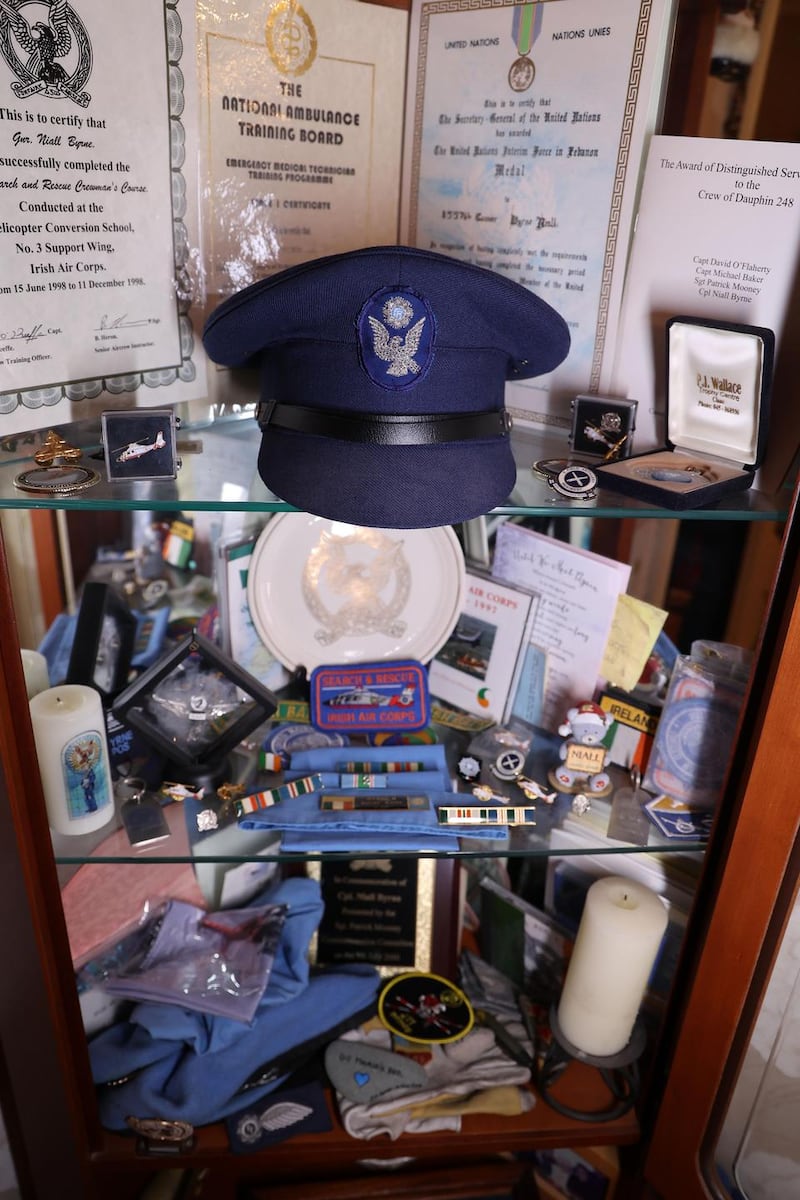
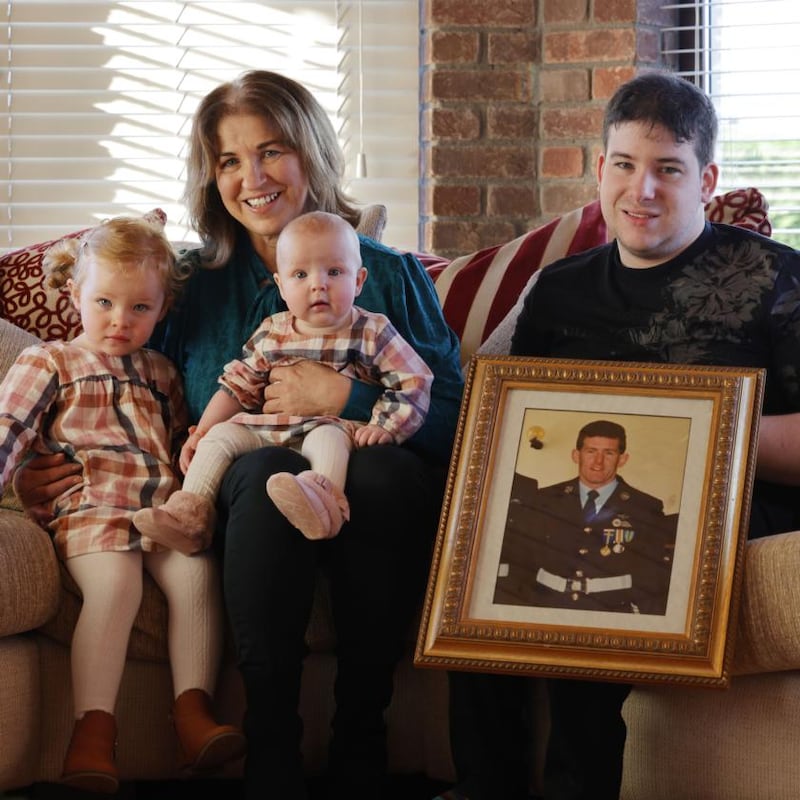
“I remember the smell of diesel,” Vincent says. The site was burned black and still smouldering. They couldn’t take it in. Their grief is still powerful. All these years later, the family weep when they talk to me about their lost son and brother.
Later, Vincent read the Air Accident Investigation Unit’s report into the crash. Anna didn’t. Neither did Aoife. They say they never will. The Byrnes decided a long time ago that they were not seeking to lay blame anywhere for the crash. “Reading the report was almost irrelevant, because what was done was done,” Vincent says.
The introduction to the report includes the statement: “It is not the purpose of the accident investigation nor the investigation report to apportion blame or liability.”
The report also notes: “The fact that a Cockpit Voice Recorder was not fitted limited the investigation in that it was not possible to determine the strategies developed by the crew as the mission progressed. Similarly, the absence of a Digital Flight Data Recorder meant it was not possible to determine the exact flight-path of the aircraft in the final stages of the flight, nor the performance of the various installed systems.”
“There were loads of things that happened but the bottom line is, if there hadn’t been the fog, if there were clear skies, they would have landed fine,” Aoife says.
The winch operator
While the Byrne household was astir in south Dublin, the Mooney household in rural Co Meath were still sleeping.
Pat and Monica Mooney first met as small children in primary school. They married in 1988. Early on the morning of July 1st, Pat Mooney got a lift with a neighbour to Baldonnel. That was the last time Monica spoke to him. That day, she took their three children, Aisling (10), Conor (8) and Mark (2), for an outing to a nearby race meet.
Mooney was away from home on overnights usually twice a month, and it was their custom for him to call her at around 10pm. He did not call that evening. Unbeknown to her, at that exact time, Dave Flaherty was mustering his colleagues in Dunmore East, including Mooney, to drive to Waterford Airport for the first night time callout for Rescue 111.
The three children in bed, Monica waited up until 11pm for a call that never came from her husband. Then she went to bed herself.
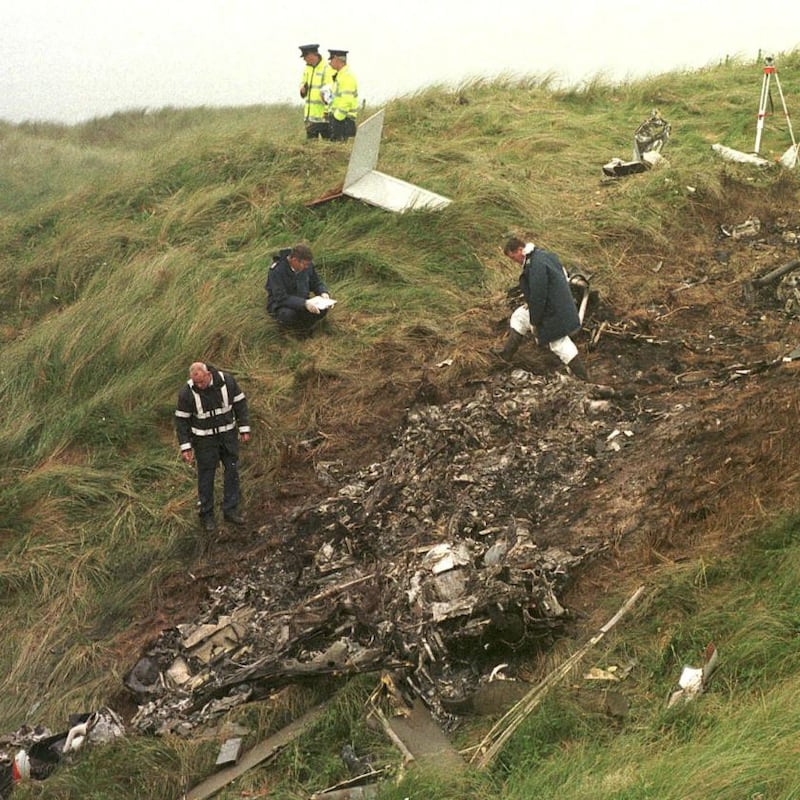
Monica Mooney still lives in their family home, where we meet one November morning. “Pat was a very quiet man who loved his family,” she says. “He absolutely idolised his children. I always felt very secure with him.”
The house that the family of five lived in was in a remote area of Meath that new visitors found difficult to locate.
“At around 5am the doorbell went,” she says. “It was bright outside. I opened the curtains. When I opened the curtains, I could see a Garda car. And another car.” The Army men, chosen because they were known to Monica, and who had been dispatched from Baldonnel to break the news of the missing helicopter, were not certain of the location of the Mooney house. The Balbriggan gardaí had thus been enlisted to escort the army vehicle there.
“I rushed to the door. Two of Patrick’s colleagues were there. I knew straight away this was something to do with Patrick.”
One of the Air Corps men told her: “The heli is missing.”
As family and neighbours gathered, what was going through Monica’s head was the thought: “I had everybody around me except the one person I wanted.”
She cries as she recalls that dreadful morning. Then she was told the news. No survivors.
I feel I was robbed of my whole future with Pat. The children didn't get to know him and grow up with him
“I said I want to go to Tramore, and I wanted to see Patrick’s body. I had to see it to believe that it was after happening.”
Family and friends took care of the children. The Air Corps provided transport to Tramore, and her mother accompanied her. They made a stop to use services en route. The Evening Herald had a photograph of the four men on its front cover, which the people she was with tried unsuccessfully to hide from her.
On arrival at Waterford, she was met by a colleague of her husband’s. By then, the bodies had been removed to the morgue. “Monica, you’re not able to see Paddy’s body,” her husband’s colleague told her. “And that just struck me so hard. Why can I not see it, I said? He said it wouldn’t be advisable. I kind of went blank then.”
Mick Baker’s family were there, and so were the Byrnes. They were all at some stage of either visiting, or returning from, the crash site at the dunes. At that stage, none of the families knew each other, although they were now united by the same tragedy. Monica Mooney went to the crash site.
“When I went up, there was nothing there of the helicopter. There were just bits and pieces. I had expected to see the aircraft,” she recalls. She is grateful now for that experience: it helped her, she says, to accept her husband really was dead.
The Bakers underwent additional distress after the death of their son, Mick: their family home was burgled on the day of his funeral
Those first years after his death, when their children were still so young, were very challenging for her. “I feel I was robbed of my whole future with Pat. The children didn’t get to know him and grow up with him. I did have help from family and friends, but the one person I wanted was gone.
“All our four families were affected forever afterwards. They died in the service of their country, and people should remember them. Sometimes, I think the people of the country have forgotten who they were.”
Until the crash of Rescue 116 on March 14th, 2017, over the sea at Blackrock Island in Co Mayo, the loss of Rescue 111 was the single biggest tragedy in Irish search-and-rescue history. All four Coast Guard personnel aboard Rescue 116 also died: Capt Dara Fitzpatrick; Capt Mark Duffy; winch operator Paul Ormsby; and winchman Ciarán Smith. The bodies of Paul Ormsby and Ciarán Smith were never recovered.
“The four lads” of Rescue 111, as Aoife Byrne describes them, have not been forgotten. They continue to be remembered both in a formal capacity at regular Air Corps and Coast Guard services, and informal ones, organised by family and friends.
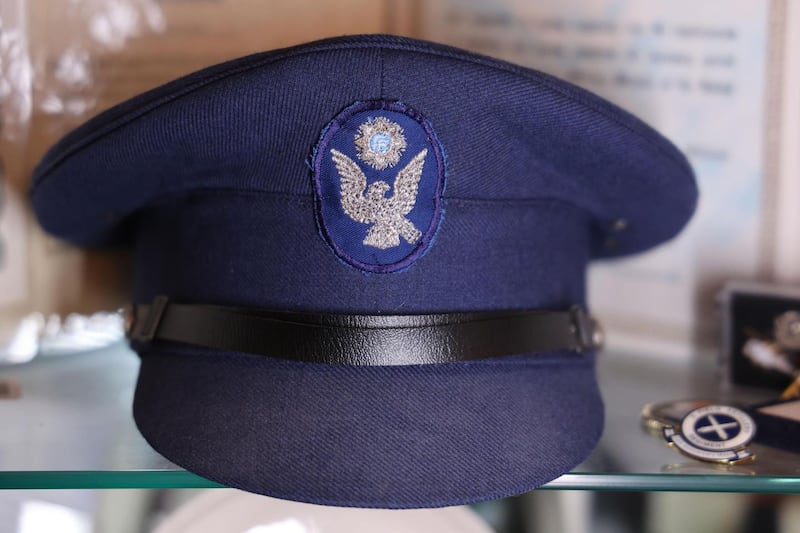
The O’Flaherty family preferred not to be interviewed for this article. The Irish Times was unable to make contact with any members of the Baker family. The Bakers underwent additional distress after the death of their son Mick: their family home was burgled on the day of his funeral.
None of the families who spoke to The Irish Times was ever contacted after the crash by any of the five rescued people who had been on the Realt Or.
There is a striking public memorial to Dave O’Flaherty, Mick Baker, Pat Mooney and Niall Byrne on the promenade at Tramore beach. A sculpture of a stylised helicopter is suspended over a square block of granite, on which their four names are carved.
The memorial includes these words: “While the final minutes of Rescue 111’s flight will always be a mystery, in fulfilling their unit motto, ‘Go Mairidis Beo’ (‘that others may live’), they paid the ultimate price.”



















